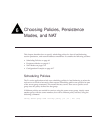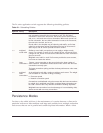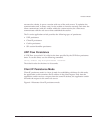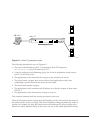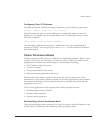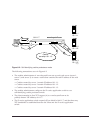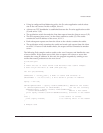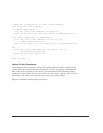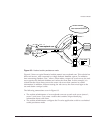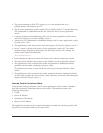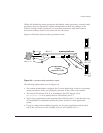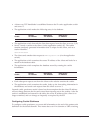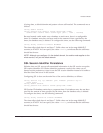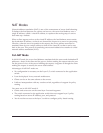
Px Series Application Switch Installation and Configuration Guide 6-7
Persistence Modes
• Using its configured load balancing policy, the Px series application switch selects
one of the web servers. In this example, server 3.
• A three-way TCP handshake is established between the Px series application switch
(C) and server 3 (D).
• The application switch forwards the first data request from the client to server 3 (E).
• The first response from server 3 to the client contains a cookie. (F). The cookie
contains the real IP address of the server, 10.1.1.3.
• Each subsequent request sent from the client to the website contains the cookie.
• The application switch examines the cookie and sends each request from this client
to server 3. If server 3 fails health checks, the request will be forwarded to another
server.
The following Perl example sends a cookie to the user’s browser, and handles the case
of server failure. If the chosen server fails, then a request will come to a server that
contains the wrong IP address. In this case, the program responds by sending a new
cookie that creates persistence to the new server.
#!/usr/bin/perl
#
# Check and set or reset Server Load Balancer host cookie example
# Uses CGI.pm available at CPAN (www.cpan.org)
use CGI qw(:standard);
$SLBCookie = 'sticky_slba'; # Name of cookie SLB switches on
$HostIPAddr = '10.10.10.106'; # This server's private IP Address
$query = new CGI;
$ExistingHostCookie = $query->cookie($SLBCookie); #Retreive the cookie
if ($ExistingHostCookie ne $HostIPAddr) { #If not set correctly
$NewHostCookie = $query->cookie(-name=>$SLBCookie,
-value=>$HostIPAddr); #Build a new cookie
print $query->header(-cookie=>$NewHostCookie); #include in the header
}
else { # The cookie is correct
print $query->header; # So nothing extra in the header
}
# Example done





